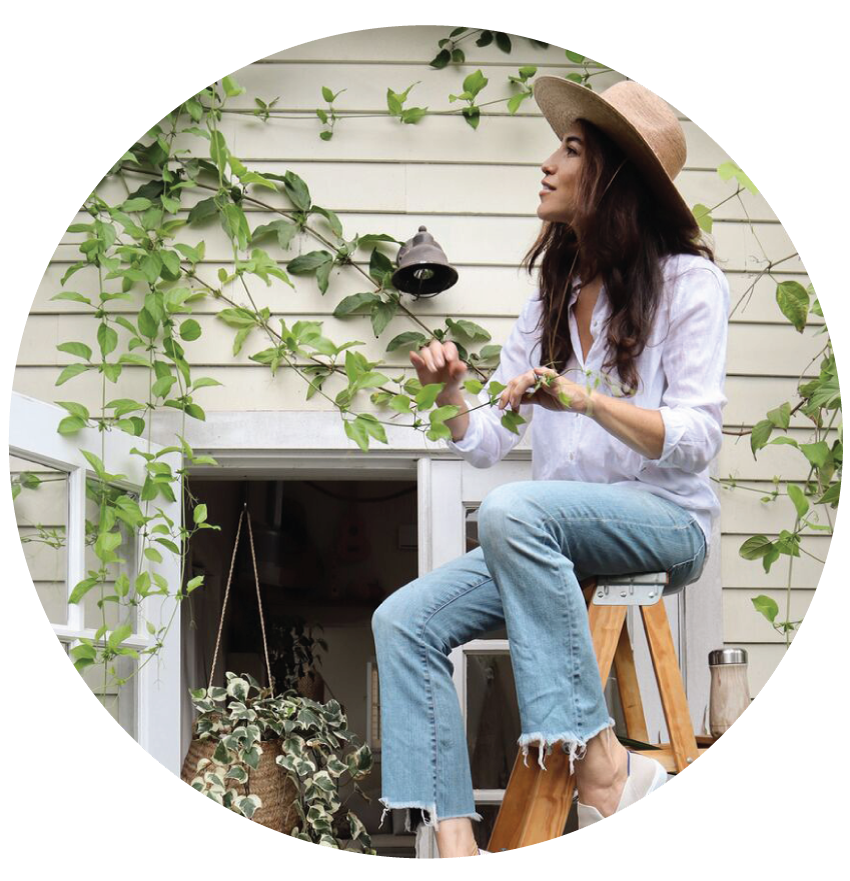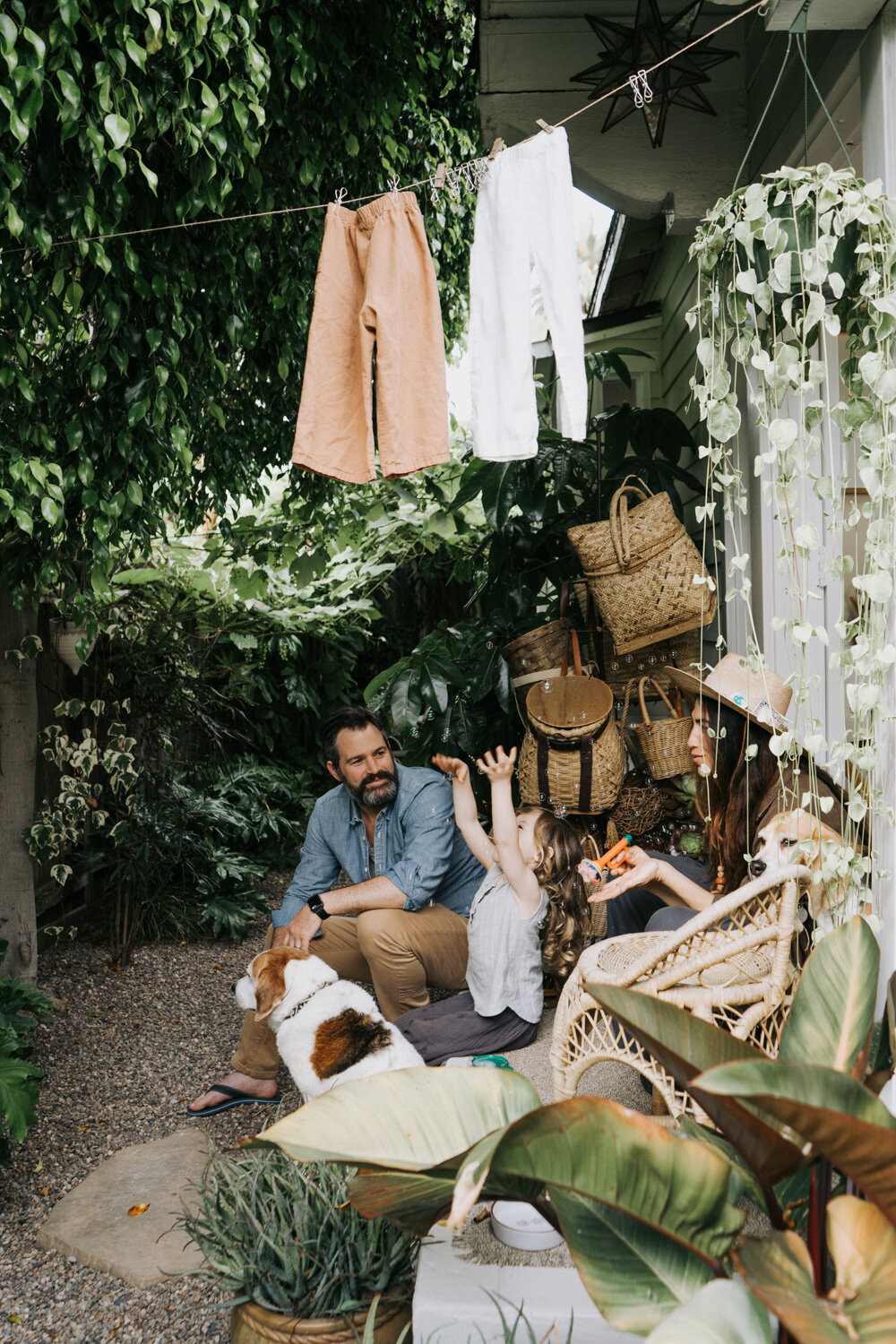How the Pandemic is Reshaping Our Living Situation
The following is part of a contributor article I wrote for Food52 / Home52. Click here to view the original piece.
My family has long lived and worked in a small space. Since the onset of the pandemic in our region, I’ve been relieved that the walls haven’t closed in on us. While our worlds have shrunk, our beloved tiny home, thankfully, has not.
We’ve lived in our less-than-400-square-foot cottage in Venice Beach, Calif., for nearly a decade, and I’ve operated my small business from home that entire time. In recent years, my husband and business partner, our preschooler, our two rescue beagles, and I have lived side by side, day in, day out.
On some mornings pre-COVID-19, my husband and our son would pair off to tackle adventures around town, providing me with time alone to write, edit, and consult with clients. Such casual excursions are now no longer an option for those living in large cities.
Getting outside is different here than it is in less-populated towns. The sheer number of people we pass while walking our dogs or biking to conduct essential errands is high enough without risking nonessential activities—most of which are inaccessible anyway. Our beloved local library remains closed. The museums at which we hold memberships have shut their doors. And some local shops are slowly locking up for good.
While our home and its narrow thoroughfare garden are a safe haven that we’re fortunate to be able to continue to rent, our bubble basically stops at the lot line. And, in the long run, that is the problem—not the size of our cherished little cottage.
When my husband and I first stumbled across our house, we didn’t give a single thought to its square footage (or lack thereof). We were drawn to its numerous windows, vaulted ceilings, pocket doors, and functional form. Every single day since, we’ve noted in one way or another just how much we love this spot, and how lucky we are to be here.
Some might see our space as limiting, but in truth, it has expanded our world immensely.
For years we’ve enjoyed the ease with which we could pedal our cargo bike to the beach, walk to the market, and canoe among the ducks and cormorants while waving to our neighbors strolling over nearby footbridges. We’ve delighted in the fact that it never takes more than half an hour to clean our entire cottage from top to bottom. And we’ve learned to dance with and around each other over our worn-out floors in a natural, joyful rhythm.
The decision to live in the sprawling, expensive, and often inconvenient city of Los Angeles is one that our family continued to commit to for the regional and cultural benefits. There is an abundance of public parks and natural retreats, access to museums, close proximity to a never-ending list of live performances, and (mostly) temperate weather that encourages a myriad of daily outings and events, year-round.
Now, abruptly, all of those things are inaccessible. So we’re left wondering what remains. We have no family here, and our friends are scattered throughout the region, each with their own teetering schedules and safety protocols. The question isn’t whether or not our house is too small for long-term sheltering in place. Instead, it's how sustainable is living within this cocoon—regardless of its square footage?
Still, perspective is key. We have a roof over our heads, access to clean water and healthy food, and devices (paired with connectivity) that help us maintain our workload and relationships. In this moment, as throughout our entire lives, the members of this household have benefited from the kind of societal privilege that needs to be acknowledged and paid forward.
For now, we are letting this ever-smaller world guide us. Outside of our immediate bubble, we discover where to donate food, home goods, bedding and funds. And within our immediate bubble, we check in with folks from over fence lines and from rooftops to ask what is needed by all. We swap books and kitchen supplies. We bundle bulk food orders with our neighbors. We now compost together rather than as an individual household. We share the produce we grow, as others share their bounty with us.
Our home is also more functional and appreciated than ever before. From our garden, Adam and I routinely set up our own, miniature nature school and playground for our child, and do so with whatever items are already available to us. When he’s ready to step inside, I swap places with him and my husband, shuffling my office outside, the dogs by my side.
More than a dozen years of living small (here and elsewhere) has taught us how to manage being within inches of one another for months on end. And, for us, these recent months have solidified our love of living simply. We fine-tuned the art of setting up and breaking down pop-up offices and home learning activities long ago, but what is newer to us since being home together nonstop is that most of our household rules and careful divisions of responsibilities are now fully out the door. Mealtimes are fluid. Activities are devised on the spot rather than planned in advance (unlike those early, ambitious weeks in March). Family movie night can be any night. Yet, these sorts of changes have been surprisingly welcome.
What we were not prepared for, however, was the whittling away of the area surrounding us—that expanded world we so deeply relished—and how each step beyond our home and garden now feels like a step into the unknown.
Note: First / key photo by Lucia Doynell.







